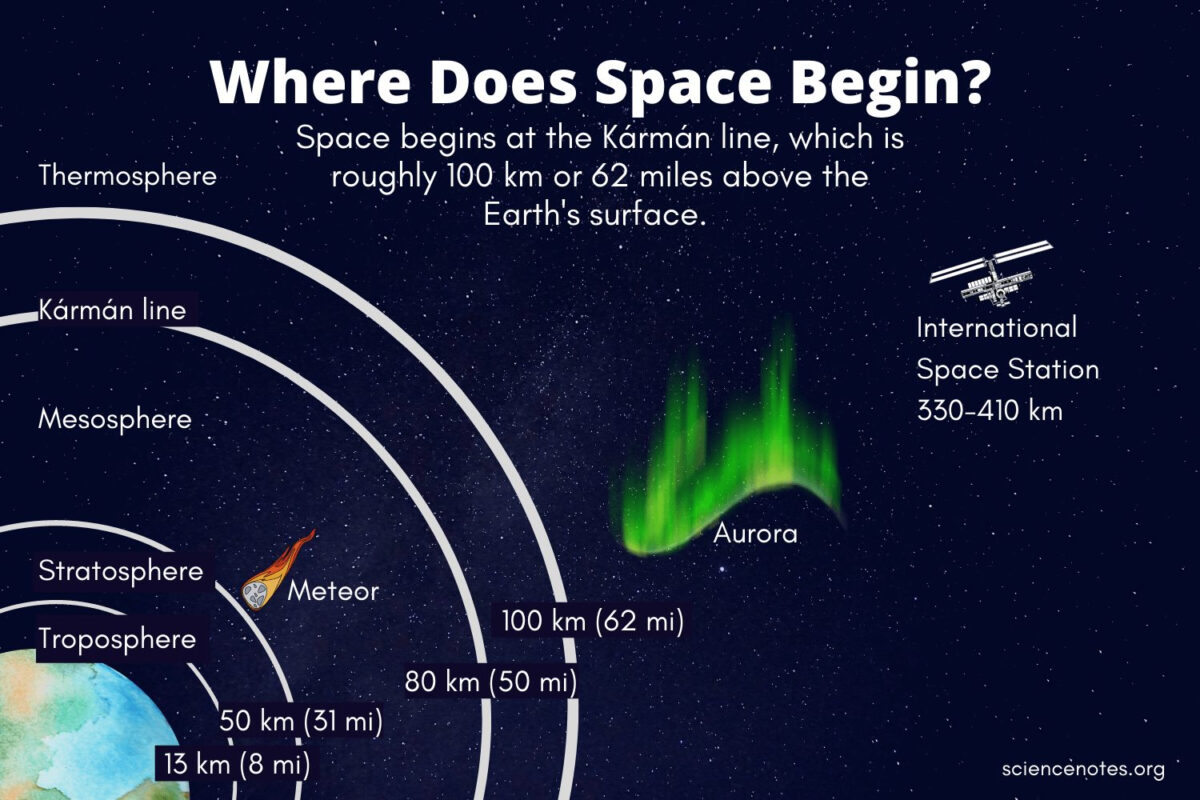Karman line
- The Kármán line is an imaginary boundary between Earth’s atmosphere and outer space, set at 100 kilometers (62 miles) above mean sea level.
- It’s named after Theodore von Kármán, a Hungarian-American physicist who, in the 1930s, analyzed the altitude at which traditional aircraft could no longer effectively fly due to the dwindling density of air.

Why is it important?
- It has historical significance, marking the transition from aeronautics (aircraft) to astronautics (spacecraft).
- It’s used for record-keeping purposes in aviation and spaceflight. For instance, the FAI (Fédération Aéronautique Internationale) recognizes flights exceeding the Kármán line as achieving “spaceflight” status.
- It helps us understand the gradual change from the denser atmosphere we’re familiar with to the near-vacuum of space.
Is it the real edge of space?
- Not exactly. The atmosphere doesn’t have a sharp cutoff point. It thins out gradually as you go higher, with trace amounts of particles detectable well beyond the Kármán line.
- Some scientists argue for different boundaries based on atmospheric properties or the behavior of spacecraft.
Interesting facts:
- The Kármán line is roughly the altitude where satellites in low Earth orbit travel.
- Astronauts experience weightlessness above the Kármán line, not because they’re truly “weightless” but because they’re in constant freefall around Earth.
- Some suborbital flights, like Virgin Galactic’s SpaceShipTwo, briefly reach above the Kármán line, offering passengers a brief taste of spaceflight.
